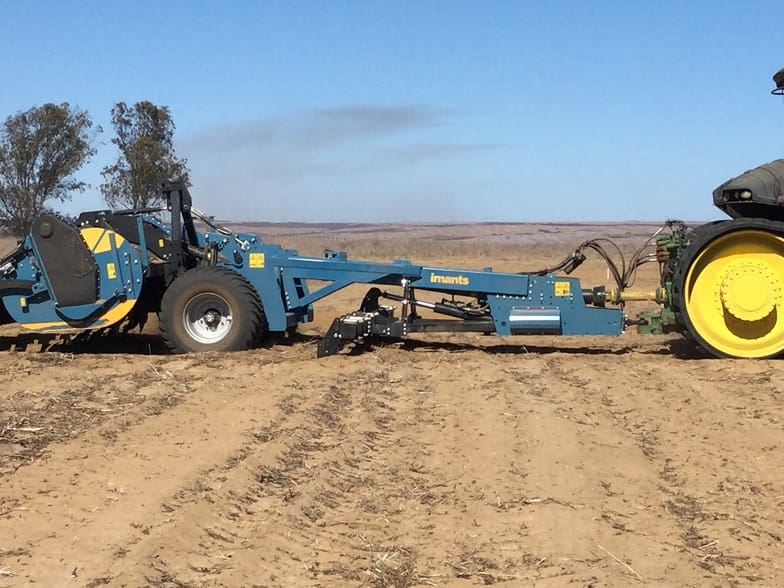
A rotary spader fitted with deep ripping tynes was used to establish a DPIRD trial on deep sands at Northampton.
A NEW soil amelioration research project in Western Australia has the heady aim of boosting grain yields by up to one tonne per hectare.
The project is exploring the use of a combination techniques and full soil profile re-engineering to address multiple soil constraints typically associated with sandy, gravel and duplex soils.
Constraints, such as subsoil compaction, subsoil acidity and soil water repellence, result in shallow crop root systems, poor access to subsoil water and up to a 50 per cent gap between actual and potential grain yield.
The $22.09 million project, with co-investment from the WA Department of Primary Industries and Regional Development and the Grains Research and Development Corporation (GRDC), will identify the most profitable and long lasting strategies to manage these constraints.
The research will build on previous work that identified the benefits of soil amelioration, such as liming, deep ripping, spading and soil inversion.
It will examine how re-engineering the soil profile through a combination of deep soil loosening, reconstituting profile layers and deep placement of nutrients and soil amendments can optimise water use and nutrient supplies.
Project leader Steve Davies said the five-year project aimed to develop targeted amelioration packages that would be applicable across an estimated 12 million hectares of sandy surfaced soils in the WA grainbelt.
“Soil amelioration has predominantly been adopted in WA on deep sands and sandy earths to a depth of 40 centimetres with good results, however, the potential benefits from re-engineering the soil profile to a depth of 80 centimetres is unknown,” Dr Davies said.
“This project will assess whether the fundamental redesign of the soil profile through soil re- engineering can achieve dramatic improvements in critical measures of cropping performance, including water and nutrient use efficiency, grain yield and grower profitability.”
The work will include at least 10 field trials spread across the port zones, glasshouse and laboratory experiments to examine how soils can be best re-engineered to optimise water and nutrient supply to crops.
The project will also draw from existing long term soil amelioration trials, some of which will be re-ripped and re-limed, to provide data on crop and soil responses and financial returns over an extended time period.
Dr Davies said a key aim of the research was to extend and upgrade the department’s Ranking Options for Soil Amelioration (ROSA) financial modelling tool to incorporate the economic benefit of soil re-engineering.
“ROSA is a valuable tool to help growers understand the costs and benefits of soil amelioration and re-engineering strategies,” he said.
Dr Davies said the potential benefits to be gained by addressing multiple soil constraints were considerable.
“If soil re-engineering could overcome the 1-1.4 tonne per hectare yield gap on these soils on just 20 per cent of the 12 million hectares with these soils, it would generate an additional $600-840 million per year in yield benefits for WA grain growers and the industry,” he said.
Source: DPIRD

HAVE YOUR SAY